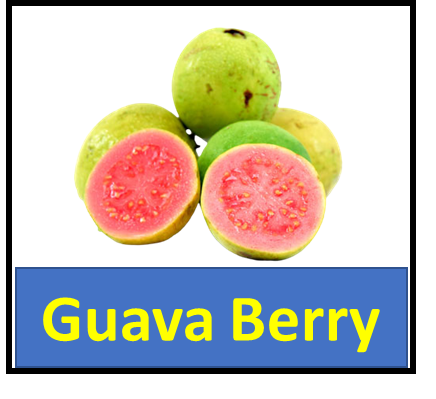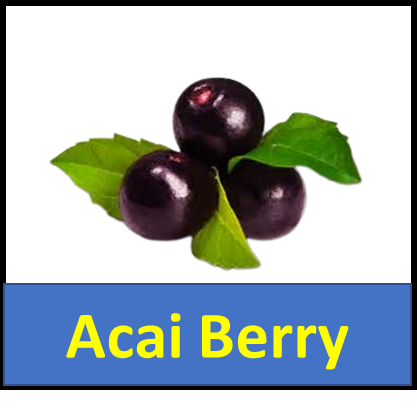Berries have long captivated our taste buds with their burst of sweetness and vibrant colors, but did you know that they also hold a wealth of health benefits? From antioxidant-rich blueberries to fiber-packed raspberries, the world of berries is as diverse as it is delicious. In this article, we will take you on a visual journey through the Berry Kingdom, showcasing an assortment of mouthwatering berries along with fascinating facts about each one.
List of Berries
Thimbleberry
A soft, edible berry, similar to a raspberry but larger, with a distinctive thimble shape, found in North America.
Snowberry
A white, inedible berry from a bushy plant, often used in decorative arrangements, not recommended for consumption.
Grapes
Small, juicy fruits grown in clusters on vines, used in making wine, raisins, and eaten fresh.
Twinberry
A plant producing small, black berries encased in a distinctive red bract, not typically consumed by humans.
Indian Plum
A fruit from the Oemleria cerasiformis shrub, native to the Pacific Northwest, with a sweet-tart flavor.
Salal Berry
A dark blue or blackberry, edible and sweet, used traditionally by Native Americans in the Pacific Northwest.
Crowberry
A black, edible berry found in cool, northern regions, often used in jams and traditional dishes.
Wild Rose/Rose Hip Berries
The fruit of the rose plant, rich in vitamin C, used in teas, jams, and for medicinal purposes.
Mulberry
A sweet berry that can be red, white, or black when ripe, found on mulberry trees, used in various cuisines.
Bunchberry
A small, red berry from a ground-covering plant, resembling a miniature dogwood, not commonly eaten.
European Mountain Ash
Produces clusters of orange-red berries, often used in jams and jellies, known for their tart flavor.
Ground Cherry
A small, yellow fruit encased in a papery husk, sweet and tangy, used in desserts and salads.
Black Currant
A small, tart, black berry, rich in vitamins and antioxidants, used in making jams, juices, and flavorings.
Juneberry
A sweet, edible berry, also known as serviceberry, resembling blueberries in taste and appearance.
Blackberry
A dark, edible berry, known for its juicy, sweet, and slightly tart flavor, used in desserts and jams.
American Black Elderberry
A small, dark berry, used in traditional medicine and for making syrups, wines, and jams.
Barberry
A bright red or orange berry, tart in flavor, used in Persian cuisine and herbal medicine.
Japanese Wineberry
A small, red berry, similar to raspberries, with a sweet-tart flavor, encased in a sticky calyx.
Cloudyberry
Not a commonly recognized term; could be a misinterpretation or local name for another berry.
Currant
Small, tart berries, can be black, red, or white, used in cooking, baking, and preserves.
Blueberry
A small, blue-purple berry, sweet and nutritious, often eaten fresh or used in baking and preserves.
Red/Black/Purple Chokeberry
Small berries known for their astringent taste when raw, used in jams and health products for their antioxidant properties.
Red Mulberry
A sweet, red to dark purple berry, found on mulberry trees, consumed fresh or used in cooking.
Dewberry
Similar to blackberries, dewberries are trailing vines with small, sweet, and tart berries.
Dogwood Berry
Berries from various dogwood species, often bright red, not all are edible and some can be toxic.
Acai Berry
A small, dark purple berry from the Amazon region, touted for its antioxidant properties, used in bowls and smoothies.
Cowberry/Foxberry
Also known as lingonberry, a small, tart, red berry found in northern forests, used in jams and cooking.
Chehalem Berry
A hybrid berry combining blackberry, raspberry, and loganberry, known for its large size and sweet flavor.
Gooseberry
A small, tart fruit, can be green, red, or purple, used in pies, jams, and savory dishes.
Sweetberry
Not a commonly recognized term; may refer to various sweet-tasting berries or could be a local or colloquial name.
Bilberry
A dark blue berry, similar to blueberries but smaller and more tart, used in European cuisine and herbal medicine.
Wineberry
An invasive raspberry species with sweet, tart red berries, encased in hairy calyxes, found in Eastern North America.
Boysenberry
A large, juicy berry, a cross among blackberry, raspberry, and loganberry, dark purple when ripe.
Mountain Cranberry
Also known as lingonberry or cowberry, a tart, red berry found in cooler climates, used in cooking and preserves.
Tayberry
A cross between a blackberry and a raspberry, producing large, sweet fruits, used in desserts and jams.
Strawberry
A sweet, red fruit with a fragrant aroma, popular worldwide, used fresh and in a variety of culinary dishes.
Shadberry
Also known as serviceberry or juneberry, offering sweet, edible berries that resemble blueberries.
Huckleberry
A small, wild berry, similar to blueberries, found in North America, used in pies, jams, and traditional dishes.
Nannyberry
A type of viburnum producing sweet, edible berries, often used in jams and jellies.
Cornelian Cherry
Produces small, tart, red berries, used in European and Middle Eastern cooking and preserves.
Juniper Berry
A small, blueberry-like cone from the juniper tree, used as a spice, particularly in flavoring gin.
Raspberry
A soft, red or black fruit, known for its sweet and slightly tart flavor, used in a wide range of dishes.
Spicebush Berry
A red berry from the spicebush plant, used in native and traditional cooking, known for its spicy flavor.
Wax Currant
A berry-producing plant found in North America, producing edible, tart red berries.
Cranberry
A tart, red berry, used in juices, sauces, and baking, known for being associated with Thanksgiving.
Serviceberry
Also known as juneberry or saskatoon, produces sweet, edible berries, used in pies and jams.
Mahonia Berry
Dark blue berries from the Mahonia shrub, tart in flavor, used in jellies and wines.
Cloudberry
A rare, amber-colored berry found in Arctic regions, known for its unique taste, used in desserts and jams.
Loganberry
A hybrid of blackberry and raspberry, with large, dark purple, juicy berries, used in cooking and beverages.
Chokeberry
Small, dark berries known for their astringent taste, used in health supplements and culinary dishes for their antioxidant content.
Saskatoon Berry
Also known as serviceberry, produces sweet, nutty-flavored berries, used in traditional Native American cuisine.
Chokecherry
A small, dark berry, tart when raw, used in jams, jellies, and syrups, particularly in North America.
Lingonberry
A small, tart, red berry, similar to the cranberry, used in Scandinavian and Northern European cuisine.
Sand Cherry
Produces small, dark purple to black cherries, used in jams and pies, found in North America.
Youngberry
A cross between blackberry, dewberry, and loganberry, known for its large, sweet-tart berries.
Goji Berry
A bright orange-red berry, known for its health benefits, used in traditional Chinese medicine and as a superfood.
Buffaloberry
A small, red or yellow berry, native to North America, used by Native Americans in traditional dishes.
Bayberry
Produces small, waxy berries, used historically for candle making, not commonly eaten.
Beautyberry
A plant with clusters of purple berries, primarily ornamental, though the berries can be used in jellies.
Baneberry
A toxic berry, white or red, from the baneberry plant, not safe for consumption.
Madrone Berry
Edible red berries from the madrone tree, used in jelly and fermentations, native to the Western US.
Rowanberry
A bright red berry from the rowan tree, tart and bitter, often used in jams and jellies after frost.
Bearberry
Produces small, red berries, used in Native American herbal medicine, not typically consumed for flavor.
Elderberry
Dark berries used in syrups and wines, known for their immune-boosting properties, must be cooked to be safe.
Marionberry
A type of blackberry from Oregon, known for its large size and sweet flavor, used in desserts and jams.
Bitterberry
Not a commonly recognized term; could refer to various berries with a bitter taste or could be a local name.
Redberry
A general term that could refer to any small, red berry, without specific botanical identification.
Wintergreen Berry
A small, red berry from the wintergreen plant, known for its minty flavor, used in teas and flavorings.
Ollalieberry
A cross between loganberry and youngberry, known for its sweet and tart flavor, used in pies and jams.
Oregon Grape
Produces small, blue-black berries, tart in taste, used in jellies and traditionally for their medicinal properties.
Salmonberry
A berry found in the Pacific Northwest, ranging in color from yellow to orange-red, similar in taste to raspberries.
Mountain Huckleberry
A small, sweet, and tart berry found in higher elevations, used in traditional Native American cuisine and desserts.
Raspberry Highbush
Not a commonly recognized term; may refer to a specific variety of raspberry or could be a confusion with another berry.
Hackberry
A small, sweet berry from the hackberry tree, not commonly consumed but edible.
Sea Buckthorn
A bright orange berry, known for its high vitamin content and tart flavor, used in juices and health products.
Strawberry Tree
Produces small, red fruits, edible but bland compared to common strawberries, found in Mediterranean regions.
Red Currant
A small, tart, red berry, used in jams, jellies, and culinary dishes for its vibrant color and flavor.
Alpine Bearberry
A berry found in alpine regions, related to the bearberry, producing small, red, edible berries.
Firethorn Berry
Produces bright red or orange berries, ornamental and mildly toxic, not recommended for consumption.
Winterberry
A bright red berry from a species of holly, primarily ornamental, not edible due to toxicity.
Indian Gooseberry
Also known as amla, a greenish-yellow fruit, very tart, used in traditional Indian medicine and cooking.
Hawthorn Berry
A small, red berry from the hawthorn tree, used in traditional medicine for heart health, mildly sweet and tart.
Cloudberries
A rare, amber-colored berry found in northern latitudes, rich in vitamin C, used in desserts and traditional dishes.
Kiwifruit
A small, brown fruit with bright green or yellow flesh and tiny black seeds, known for its sweet and tangy flavor.
Silverberry
A small, silver or greyish berry, edible but not widely consumed, found on the Elaeagnus bush.
Strawberry Guava
A small, red fruit with a sweet, strawberry-like flavor, found in tropical regions, used in jams and desserts.
Guava Berry
May refer to the small fruit of the guava tree or the strawberry guava, both sweet and used in various dishes.
Chinese Lantern Berry
The fruit encased in a bright orange, paper-like husk, known as physalis, tart and sweet, used in decorations and cooking.
Himalayan Raspberry
A wild raspberry species with sweet, tart berries, considered invasive in some areas.
Autumn Olive
Produces small, red or yellow berries, high in antioxidants, considered invasive but used in jams and jellies.
Red Raspberry
A sweet, red berry, known for its delicate flavor, used fresh or in cooking and baking.
White Mulberry
Produces sweet, white to pink berries, less common than its red or black relatives, used in traditional medicines and foods.
Explore More Fruits Names:
Green Fruits |Seedless Fruits |White Fruits


List Of Berries with Pictures
Red currant

- Antioxidant-Rich:
Red currants are loaded with antioxidants that help protect cells from oxidative stress, potentially reducing the risk of chronic diseases.
- Immune Support:
These berries contain a good amount of vitamin C, which supports a healthy immune system, aiding in warding off illnesses.
- Cardiovascular Health:
Red currants are a source of heart-healthy nutrients like fiber and potassium, contributing to better cardiovascular function and potentially lowering blood pressure.Top of Form
Bilberry

- Vision Enhancement:
Bilberries are known for promoting better vision due to their high levels of anthocyanins, which may improve retinal health and night vision.
- Antioxidant Powerhouse:
Packed with antioxidants, bilberries help combat oxidative stress, potentially reducing the risk of chronic diseases and supporting overall well-being.
- Cognitive Support:
The compounds in bilberries have been linked to cognitive benefits, potentially improving memory, focus, and overall brain function.
Sand Cherry

- Rich Nutritional Profile:
Sand cherries offer a diverse array of essential nutrients, including vitamins, minerals, and dietary fiber, contributing to overall health.
- Digestive Aid:
The dietary fiber content in sand cherries can support healthy digestion by promoting regular bowel movements and aiding in gastrointestinal health.
- Antioxidant Properties:
Sand cherries contain antioxidants that help protect cells from damage caused by free radicals, potentially reducing the risk of chronic diseases and promoting wellness.
Saskatoon Berry

- Nutrient-Rich:
Saskatoon berries are packed with essential nutrients, including vitamins, minerals, and dietary fiber, contributing to a well-rounded and balanced diet.
- Heart Health:
The fiber and antioxidants in Saskatoon berries can contribute to cardiovascular well-being by supporting healthy cholesterol levels and overall heart function.
- Anti-Inflammatory Potential:
These berries contain compounds with anti-inflammatory properties, which may aid in reducing inflammation in the body and potentially lowering the risk of certain chronic diseases.
Guava Berry

- Immune Boost:
Guava berries are rich in vitamin C, which supports a strong immune system, helping the body fend off illnesses and infections.
- Digestive Aid:
The dietary fiber content in guava berries can aid in digestion, promoting regular bowel movements and supporting gastrointestinal health.
- Skin Health:
Guava berries contain antioxidants and vitamins that contribute to healthy skin by protecting against oxidative damage and promoting a vibrant complexion.
Goji Berry

- Antioxidant-Rich:
Goji berries are a powerhouse of antioxidants, helping to combat oxidative stress and potentially reducing the risk of chronic diseases.
- Eye Health:
These berries contain nutrients that support vision, potentially enhancing eye health and reducing the risk of age-related macular degeneration.
- Energy and Vitality:
Goji berries are believed to provide an energy boost and support overall vitality due to their nutrient content and potential adaptogenic properties.
Strawberry

- Vitamin C Source:
Strawberries are a great natural source of vitamin C, contributing to a healthy immune system and overall well-being.
- Antioxidant Protection:
Packed with antioxidants, strawberries help protect cells from oxidative damage, potentially lowering the risk of chronic diseases.
- Heart Health:
The dietary fiber and potassium content in strawberries can contribute to cardiovascular well-being by supporting healthy blood pressure levels and heart function.
Bayberry

- Antioxidant-Rich:
Bayberry is celebrated for its abundant antioxidants, which aid in neutralizing harmful free radicals in the body, contributing to overall cellular health.
- Gastrointestinal Support:
This remarkable fruit provides gentle yet effective gastrointestinal support, promoting digestion and alleviating discomfort.
- Immune Boosting:
Bayberry offers a natural boost to the immune system due to its immune-enhancing properties, helping the body fend off illnesses and infections.
Acai Berry

- Potent Antioxidants:
Acai berries are renowned for their high concentration of potent antioxidants, which play a crucial role in combating oxidative stress and promoting cellular health.
- Heart Health Support:
Acai berries contribute to heart health by aiding in the maintenance of healthy cholesterol levels and supporting proper blood circulation, reducing the risk of cardiovascular issues.
- Cognitive Enhancement:
The compounds found in acai berries are believed to have cognitive-enhancing effects, potentially improving memory, focus, and overall brain function.
Sea Buckthorn

- Rich Nutritional Profile:
Sea buckthorn is a treasure trove of essential nutrients, including vitamins, minerals, and fatty acids, offering comprehensive nourishment for overall well-being.
- Skin Health Promotion:
With its high content of antioxidants and omega fatty acids, sea buckthorn aids in promoting healthy skin by supporting collagen production, reducing inflammation, and enhancing skin elasticity.
- Digestive Relief:
Sea buckthorn’s bioactive compounds can contribute to digestive well-being, assisting in soothing digestive discomfort, promoting gut health, and potentially alleviating gastrointestinal issues.
Autumn Olive

- Abundant Antioxidants:
Autumn olive is recognized for its rich reservoir of antioxidants, which play a pivotal role in neutralizing harmful free radicals and supporting cellular health.
- Cardiovascular Support:
The compounds present in autumn olive may aid in maintaining cardiovascular health by contributing to healthy blood pressure levels and supporting proper blood circulation.
- Immune System Enhancement:
Autumn olive’s potential immune-boosting properties make it a valuable asset in fortifying the body’s defenses against infections and illnesses.
Tayberry

- Dietary Fiber Source:
Tayberries are a great source of dietary fiber, which supports healthy digestion, helps maintain regular bowel movements, and can contribute to a feeling of fullness.
- Vitamin-Rich:
Tayberries are packed with essential vitamins, such as vitamin C and vitamin K, which play roles in immune function, collagen synthesis, and bone health.
- Antioxidant Content:
Tayberries contain antioxidants like anthocyanins, which can help protect cells from oxidative damage, potentially reducing the risk of chronic diseases.
